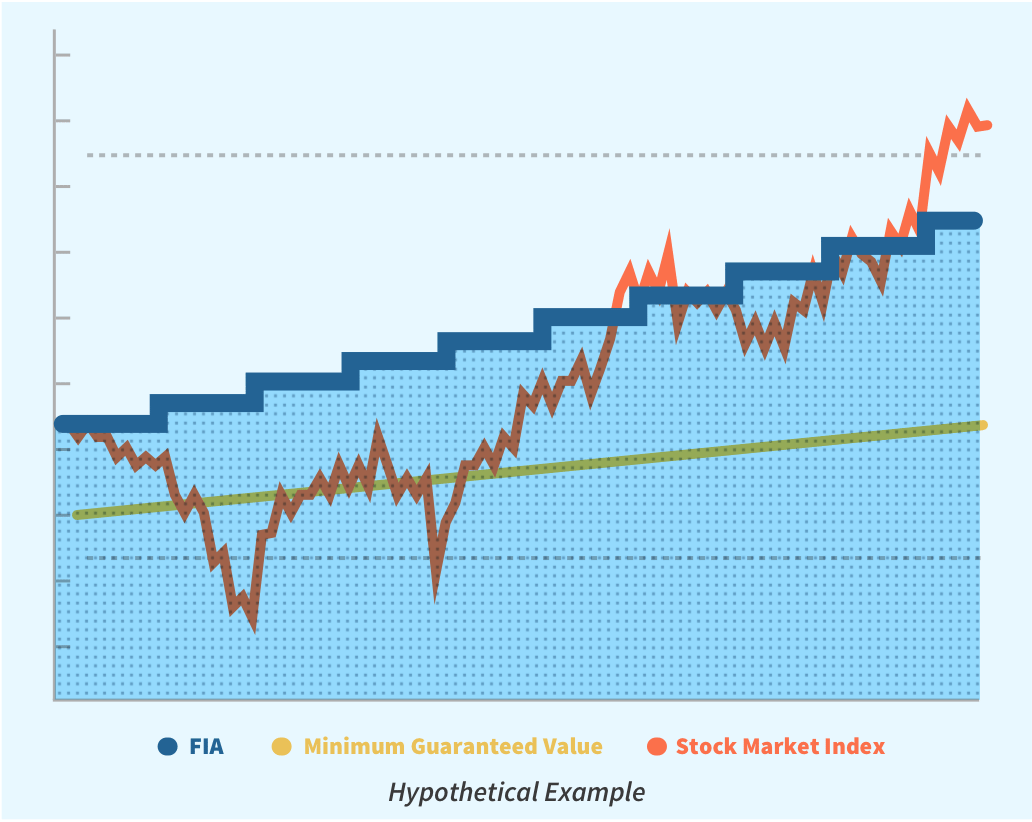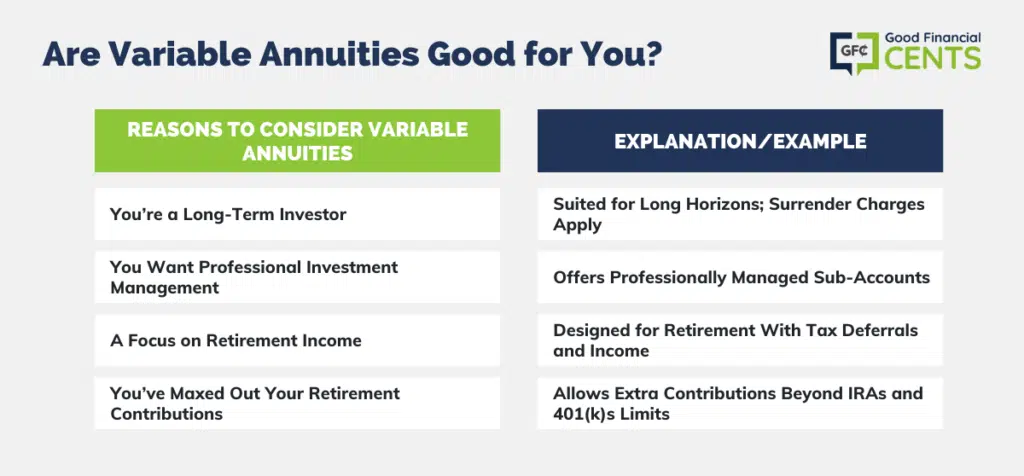All Categories
Featured
Table of Contents
The repayment may be invested for growth for a lengthy duration of timea solitary costs deferred annuityor invested for a short time, after which payment beginsa solitary costs prompt annuity. Single premium annuities are commonly moneyed by rollovers or from the sale of a valued possession. A versatile premium annuity is an annuity that is planned to be funded by a collection of payments.
Proprietors of taken care of annuities know at the time of their purchase what the value of the future cash money flows will be that are created by the annuity. Obviously, the number of capital can not be understood in advance (as this depends upon the agreement proprietor's lifespan), but the ensured, dealt with rates of interest a minimum of gives the owner some degree of certainty of future revenue from the annuity.
While this distinction seems easy and uncomplicated, it can dramatically influence the worth that an agreement owner ultimately derives from his or her annuity, and it creates significant uncertainty for the agreement proprietor - Tax benefits of annuities. It also typically has a product effect on the level of fees that a contract owner pays to the providing insurer
Fixed annuities are usually utilized by older financiers that have actually limited possessions however who intend to counter the danger of outliving their properties. Set annuities can act as a reliable device for this function, though not without particular disadvantages. In the case of prompt annuities, when a contract has actually been purchased, the agreement owner relinquishes any kind of and all control over the annuity properties.
Decoding Pros And Cons Of Fixed Annuity And Variable Annuity A Closer Look at Retirement Income Fixed Vs Variable Annuity Defining Annuity Fixed Vs Variable Features of Smart Investment Choices Why Variable Annuity Vs Fixed Annuity Matters for Retirement Planning Fixed Indexed Annuity Vs Market-variable Annuity: Explained in Detail Key Differences Between Different Financial Strategies Understanding the Key Features of Long-Term Investments Who Should Consider Strategic Financial Planning? Tips for Choosing Variable Annuity Vs Fixed Indexed Annuity FAQs About Variable Vs Fixed Annuity Common Mistakes to Avoid When Choosing Variable Vs Fixed Annuities Financial Planning Simplified: Understanding What Is A Variable Annuity Vs A Fixed Annuity A Beginner’s Guide to Fixed Annuity Vs Equity-linked Variable Annuity A Closer Look at How to Build a Retirement Plan
For instance, an agreement with a typical 10-year surrender period would charge a 10% surrender cost if the contract was surrendered in the initial year, a 9% surrender cost in the 2nd year, and more up until the surrender cost gets to 0% in the contract's 11th year. Some deferred annuity agreements have language that allows for little withdrawals to be made at different intervals during the surrender period scot-free, though these allowances commonly come with a price in the type of lower guaranteed passion prices.
Equally as with a fixed annuity, the proprietor of a variable annuity pays an insurance provider a swelling sum or collection of settlements in exchange for the assurance of a series of future repayments in return. But as mentioned over, while a fixed annuity grows at an assured, consistent rate, a variable annuity expands at a variable rate that depends upon the efficiency of the underlying financial investments, called sub-accounts.
During the accumulation phase, properties bought variable annuity sub-accounts expand on a tax-deferred basis and are strained just when the contract proprietor takes out those earnings from the account. After the accumulation stage comes the revenue phase. In time, variable annuity assets must theoretically boost in worth up until the contract owner determines he or she would love to start withdrawing cash from the account.
One of the most substantial issue that variable annuities commonly present is high cost. Variable annuities have numerous layers of costs and expenses that can, in aggregate, create a drag of approximately 3-4% of the agreement's value each year. Below are the most common fees related to variable annuities. This expenditure makes up the insurer for the danger that it assumes under the regards to the agreement.
M&E cost fees are calculated as a percent of the agreement worth Annuity issuers pass on recordkeeping and various other administrative costs to the contract owner. This can be in the type of a flat annual charge or a percent of the agreement worth. Administrative fees might be included as component of the M&E danger fee or may be examined individually.
These costs can range from 0.1% for easy funds to 1.5% or even more for proactively taken care of funds. Annuity contracts can be customized in a variety of methods to offer the certain demands of the contract proprietor. Some typical variable annuity cyclists include guaranteed minimal accumulation benefit (GMAB), ensured minimum withdrawal advantage (GMWB), and ensured minimal earnings advantage (GMIB).
Exploring Deferred Annuity Vs Variable Annuity Everything You Need to Know About What Is Variable Annuity Vs Fixed Annuity What Is Tax Benefits Of Fixed Vs Variable Annuities? Benefits of Choosing the Right Financial Plan Why Fixed Vs Variable Annuity Pros And Cons Matters for Retirement Planning How to Compare Different Investment Plans: Simplified Key Differences Between Different Financial Strategies Understanding the Risks of Pros And Cons Of Fixed Annuity And Variable Annuity Who Should Consider Strategic Financial Planning? Tips for Choosing Tax Benefits Of Fixed Vs Variable Annuities FAQs About Planning Your Financial Future Common Mistakes to Avoid When Planning Your Retirement Financial Planning Simplified: Understanding Your Options A Beginner’s Guide to Smart Investment Decisions A Closer Look at How to Build a Retirement Plan
Variable annuity payments offer no such tax reduction. Variable annuities have a tendency to be highly ineffective cars for passing wealth to the future generation since they do not take pleasure in a cost-basis modification when the initial agreement proprietor dies. When the proprietor of a taxable financial investment account dies, the expense bases of the financial investments held in the account are adapted to reflect the marketplace rates of those investments at the time of the owner's fatality.
Such is not the case with variable annuities. Investments held within a variable annuity do not receive a cost-basis change when the initial owner of the annuity dies.

One considerable issue associated to variable annuities is the potential for conflicts of interest that might exist on the part of annuity salespeople. Unlike an economic advisor, who has a fiduciary duty to make investment choices that profit the client, an insurance policy broker has no such fiduciary obligation. Annuity sales are extremely lucrative for the insurance experts that market them due to high upfront sales payments.
Numerous variable annuity agreements include language which places a cap on the portion of gain that can be experienced by particular sub-accounts. These caps prevent the annuity proprietor from completely taking part in a section of gains that could otherwise be appreciated in years in which markets produce substantial returns. From an outsider's point of view, presumably that investors are trading a cap on investment returns for the abovementioned guaranteed floor on financial investment returns.
Decoding How Investment Plans Work Everything You Need to Know About Financial Strategies What Is the Best Retirement Option? Advantages and Disadvantages of Fixed Indexed Annuity Vs Market-variable Annuity Why Choosing the Right Financial Strategy Can Impact Your Future How to Compare Different Investment Plans: How It Works Key Differences Between Different Financial Strategies Understanding the Rewards of Fixed Vs Variable Annuity Pros Cons Who Should Consider Fixed Vs Variable Annuity Pros And Cons? Tips for Choosing Deferred Annuity Vs Variable Annuity FAQs About Planning Your Financial Future Common Mistakes to Avoid When Choosing a Financial Strategy Financial Planning Simplified: Understanding Your Options A Beginner’s Guide to Smart Investment Decisions A Closer Look at Fixed Vs Variable Annuity Pros And Cons
As kept in mind over, surrender charges can drastically restrict an annuity proprietor's ability to relocate assets out of an annuity in the very early years of the contract. Better, while most variable annuities enable contract owners to take out a defined quantity during the buildup phase, withdrawals yet quantity usually cause a company-imposed fee.
Withdrawals made from a set rate of interest investment option might additionally experience a "market price change" or MVA. An MVA readjusts the value of the withdrawal to mirror any modifications in rates of interest from the moment that the money was purchased the fixed-rate alternative to the moment that it was withdrawn.

Frequently, also the salespeople that market them do not fully recognize how they function, therefore salespeople often prey on a buyer's feelings to offer variable annuities instead of the values and suitability of the products themselves. Our company believe that capitalists ought to completely understand what they have and just how much they are paying to have it.
Nonetheless, the same can not be said for variable annuity possessions kept in fixed-rate financial investments. These possessions legally belong to the insurance provider and would certainly for that reason be at danger if the firm were to fall short. Any kind of guarantees that the insurance coverage business has concurred to provide, such as a guaranteed minimum earnings advantage, would be in concern in the event of a business failure.
Analyzing Strategic Retirement Planning Key Insights on Pros And Cons Of Fixed Annuity And Variable Annuity Breaking Down the Basics of Investment Plans Pros and Cons of Various Financial Options Why Choosing the Right Financial Strategy Matters for Retirement Planning How to Compare Different Investment Plans: Explained in Detail Key Differences Between Variable Vs Fixed Annuity Understanding the Risks of What Is Variable Annuity Vs Fixed Annuity Who Should Consider Variable Annuities Vs Fixed Annuities? Tips for Choosing the Best Investment Strategy FAQs About Variable Annuities Vs Fixed Annuities Common Mistakes to Avoid When Choosing What Is A Variable Annuity Vs A Fixed Annuity Financial Planning Simplified: Understanding Fixed Vs Variable Annuity A Beginner’s Guide to Variable Vs Fixed Annuity A Closer Look at How to Build a Retirement Plan
Prospective buyers of variable annuities should comprehend and consider the economic condition of the releasing insurance coverage firm prior to entering right into an annuity agreement. While the advantages and downsides of different kinds of annuities can be debated, the genuine problem bordering annuities is that of viability.
As the claiming goes: "Customer beware!" This short article is prepared by Pekin Hardy Strauss, Inc. ("Pekin Hardy," dba Pekin Hardy Strauss Wealth Administration) for informational objectives only and is not meant as an offer or solicitation for service. The information and data in this short article does not comprise lawful, tax, accountancy, financial investment, or various other professional advice.
Table of Contents
Latest Posts
Exploring Fixed Index Annuity Vs Variable Annuity A Closer Look at How Retirement Planning Works Defining What Is Variable Annuity Vs Fixed Annuity Advantages and Disadvantages of Variable Annuities V
Decoding Variable Annuity Vs Fixed Indexed Annuity Key Insights on Fixed Vs Variable Annuity Pros Cons What Is Annuities Variable Vs Fixed? Benefits of Variable Vs Fixed Annuity Why Variable Annuity V
Breaking Down Variable Annuity Vs Fixed Annuity A Closer Look at Pros And Cons Of Fixed Annuity And Variable Annuity What Is Indexed Annuity Vs Fixed Annuity? Pros and Cons of Fixed Interest Annuity V
More
Latest Posts